Key Takeaways
Traveling internationally with a baby offers:
- Preparation is Key: Ensure passports, health checks, and essential documents are in order before the trip.
- Choose Baby-Friendly Destinations: Select countries with accessible healthcare, family-friendly amenities, and mild climates.
- Gear for Comfort: Invest in essential items like a car seat, lightweight stroller, and travel bassinet for ease and convenience.
- Flying Tips: Plan flights around baby’s sleep schedule, request bassinets, and pack essentials for a smoother journey.
Check out our baby gear rentals.
Traveling internationally with a baby may seem daunting, but it can also be one of the most rewarding adventures you embark upon as a family! With some preparation and the right gear, your journey can be smooth, enjoyable, and joyful. This guide will share essential tips and must-have gear to help you quickly navigate the globe while flying with a baby.
What You Should Know about International Travel with an Infant
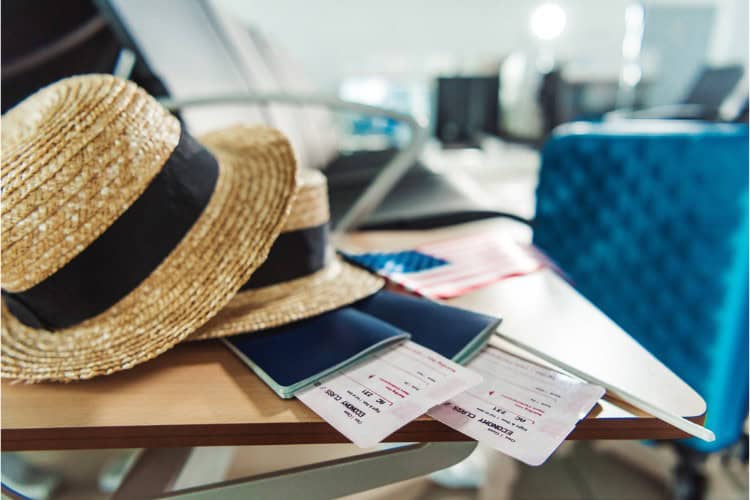
Traveling internationally with an infant requires careful planning and preparation. Several factors must be considered, from understanding airline policies on infant travel to passports and health considerations.
Passports and Essential Documents Needed
Passports are mandatory for international travel, even for infants. Parents must obtain a valid passport for their child by submitting a passport photo and application to the appropriate authorities. Along with a passport, it’s important to carry additional documents like the infant’s birth certificate to confirm age, especially for domestic flights. Some airlines may also require a travel consent letter if only one parent is traveling with the baby, so checking airline policies in advance is essential to avoid complications.
Additionally, securing travel insurance can provide peace of mind by covering potential medical or trip-related emergencies during your travels.
Health Considerations
Before flying overseas, parents should consult with a pediatrician to discuss any potential health issues related to air travel. It’s essential to consider the baby’s age, as younger infants may be more susceptible to ear pressure changes during takeoff and landing. Keeping the baby hydrated and feeding them during these times can help alleviate discomfort.
Additionally, parents should be aware of the vaccination requirements for the destination country, if any. Bringing a first-aid kit with essentials can also provide peace of mind while traveling.
How to Choose the Right Destination when Flying with an Infant
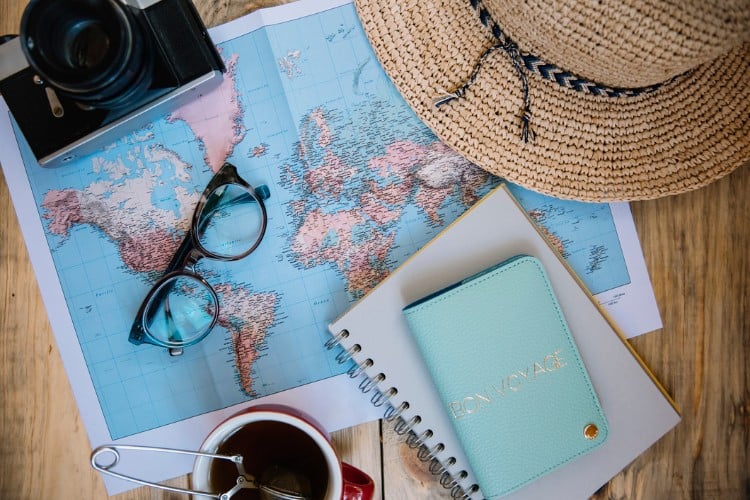
Choosing the right destination when flying with an infant is key to ensuring a smooth and enjoyable trip for both parents and baby. This guide will help you consider important things when selecting a baby-friendly destination that suits your family’s needs and allows for a stress-free vacation experience.
Things to Consider in a Baby-friendly Destination
Here are some things to note before planning your trip that you’ve might not thought about.
- Consider the accessibility of healthcare facilities at your destination. Places with good hospitals and pediatric care can provide peace of mind.
- Check out the accommodation options; look for family-friendly hotels or rentals that offer amenities like cribs and kitchenettes.
- Research the local culture and customs; some places may need to be more baby-friendly regarding transportation and dining options.
Lastly, does this destination offer family-friendly things to do with your little one that are age-appropriate?
Specific Countries or Regions More Suitable for Families with Infants
If you’re unsure where you want to go but want some suggestions for family-friendly countries, you’re in the right place. Scandinavia emerges as a prime choice when considering destinations for families with infants. Countries like Sweden and Norway boast excellent healthcare systems, clean environments, and family-friendly amenities, making travel with kiddos much more accessible.
In addition, Canada is renowned for its welcoming attitude towards families. Cities like Vancouver and Toronto offer numerous parks and attractions that cater to young children, ensuring a pleasant experience for parents and infants alike. In Australia, particularly in cities like Sydney, you’ll find accessible beaches and child-friendly facilities, allowing families to enjoy relaxation and adventure.
Factoring in Climate and Weather
Babies are susceptible to extreme temperatures, so selecting a location with a mild climate can enhance their comfort. Packing appropriate clothing, such as layers for varying temperatures, is crucial to ensure your baby stays comfortable throughout the trip. Researching local weather patterns will help you plan outings and activities that suit your baby’s needs.
How to Prepare Your Baby for the Flight
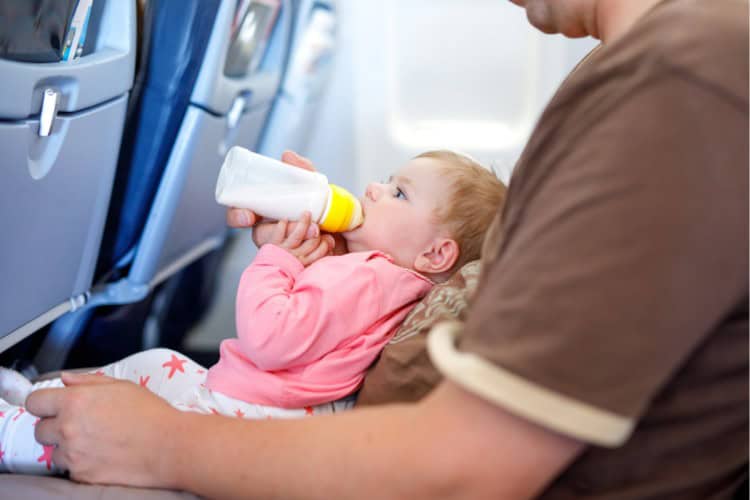
Preparing your baby for a long flight involves planning to ensure both comfort and convenience. Here are key tips to help:
- Pack essentials. To keep your baby comfortable during the flight, pack essential items such as diapers, wipes, snacks, a blanket, and a favorite toy.
- Flight times. To make the journey smoother, consider choosing a flight that aligns with your baby’s sleep schedule. Overnight flights can be helpful for longer naps.
- Bassinets. Many airlines offer bassinets for infants on international flights. Request one in advance for added comfort.
- Baby’s sleep schedule. Gradually adjust your baby’s sleep schedule before the trip to align with your destination’s time zone.
- Requesting seats. Opt for bulkhead seats for extra legroom and space for baby gear.
- Dress in layers. Airplanes can fluctuate between warm and cold, so dress your baby in layers that are easy to adjust.
- Prevent ear pressure discomfort. During the flight, encourage your baby to breastfeed, drink from a bottle, or take a pacifier during takeoff and landing to help alleviate ear pressure.
- Prepare for delays. Be prepared for potential delays by bringing extra supplies and a change of clothes.
- Walking may help. Be prepared to walk up and down the aisle with your baby if needed, and take breaks to help soothe any fussiness.
Lastly, stay calm and flexible, as traveling with a baby can be unpredictable. Thankfully, flight attendants should be able to help where they can.
Essential Gear for Family Travel with a Newborn
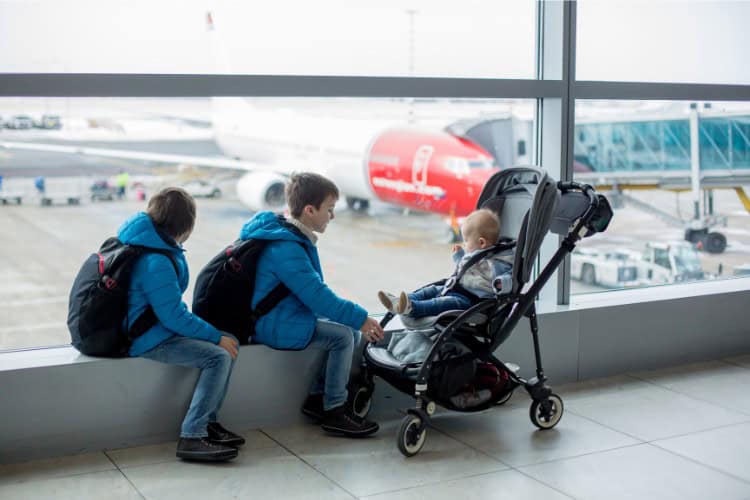
When traveling with a newborn, having the right gear can make a significant difference in ensuring a smooth and comfortable trip for both baby and parents. Here are items to consider bringing or renting:
- A reliable infant car seat is a must-have for any road trips or flights, as it guarantees the safety and comfort of your child.
- Many parents also find a lightweight stroller invaluable. It allows easy navigation through airports and crowded places while keeping the baby secure and comfortable.
- Packing a diaper bag that includes all necessary supplies, such as diapers, wipes, and bottles, is essential for quick access during travel.
- Other items, such as a baby carrier or slings, can also provide hands-free convenience, allowing parents to manage luggage while keeping the baby close.
Finally, remember to bring a portable crib or travel bassinet to ensure your newborn has a safe and familiar sleeping environment wherever you go.
How to Manage Layovers with a Baby
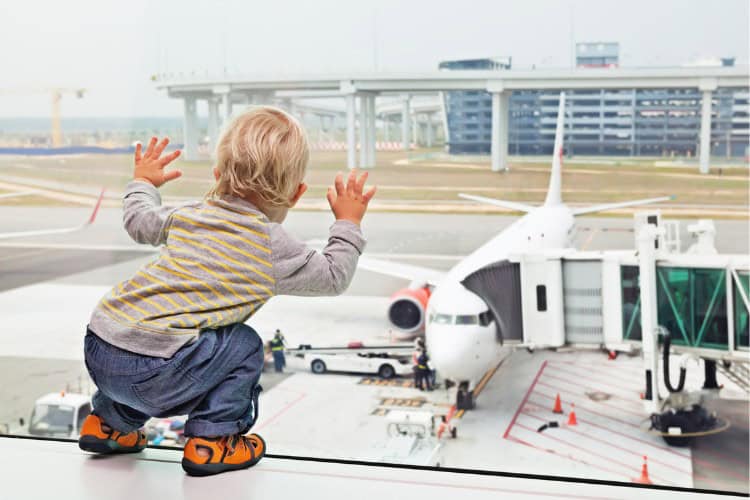
Managing layovers with a baby requires thoughtful planning to keep your little one comfortable and entertained. Here are some helpful tips:
- Choose Layover-Friendly Airports: Select flights with layovers at airports known for family-friendly amenities, like play areas, nursing rooms, or quiet zones.
- Check Airport Amenities: Check facilities ahead of time, including baby-changing stations, family restrooms, and baby-friendly lounges.
- Essentials in Your Carry-On: Pack enough diapers, wipes, baby food or formula, extra clothes, and any comfort items (blanket, pacifier) to last through the layover and potential delays.
- Entertainment: Bring small toys, books, or download baby-friendly apps or videos on your phone or tablet to keep your baby entertained during the wait.
- Stretch and Play: Layovers are an excellent opportunity for your baby to stretch and move around. Find a clean, open space or a designated play area where they can crawl or walk.
- Baby Carrier: If your baby prefers being held, using a baby carrier can help them feel secure while allowing you to move freely around the airport.
- Feeding: Use the layover time to feed your baby so they’re comfortable during the next flight. Find a quiet spot, and check for nursing rooms if breastfeeding.
- Napping: Plan your baby’s nap schedule around the layover to help them rest and avoid crankiness. A stroller or baby carrier can help get them to sleep.
Expect the possibility of delays, and keep a relaxed attitude. Being flexible and ready for any situation will help make the experience smoother for you and your baby.
FAQs: Traveling Internationally with a Baby
What documents do I need to travel internationally with a baby?
It’s essential to have the proper documentation. Most countries require that your baby have a valid passport. To obtain a visa for your little one, you must provide a passport photo, proof of citizenship (such as a birth certificate), and identification for the parents or guardians. Be sure to check the specific entry requirements of your destination country since some may have additional regulations for international travel.
Can my baby fly for free on international flights?
Many airlines allow lap infants (children under two years old) to fly for free or at a reduced fare on international flights. However, this typically means that your infant will need to sit on your lap for the duration of the flight. If you prefer a separate seat for your little one, you can purchase a ticket for them. It’s crucial to check with your airline ahead of time, as policies regarding travel with a baby can vary significantly.
Can I bring a car seat on the plane?
Many airlines allow you to get a car seat for your child’s safety and comfort. However, it’s essential to check with your specific airline for their policies regarding car seat usage and size restrictions. Most airlines recommend using an FAA-approved car seat to ensure safety during the flight. Additionally, having a car seat can make transitions smoother once you reach your destination.
How can I help my baby during the flight?
Flying can be challenging for babies, especially during takeoff and landing, due to changes in cabin pressure. To help your baby, encourage them to suck on a pacifier or bottle during these times. This action can alleviate ear pressure. Additionally, keep them comfortable with a familiar baby carrier or blanket. Engage with your little one by playing games or reading books to distract them from discomfort during the flight.
Conclusion
Embrace the beauty of traveling internationally with a baby and the wonders of parenthood, knowing that every step you take is a step towards enriching your child’s life experiences. So grab your passport, pack those tiny essentials, and get ready to embark on a family adventure that will inspire and bond you for years to come!

Morgan French is a wife, mom of two, writer & editor. After traveling for 3 years with her family, she now lives back in her hometown of Dayton, OH. She makes frequent stops for coffee, enjoys the outdoors, and loves board games.



Leave A Comment